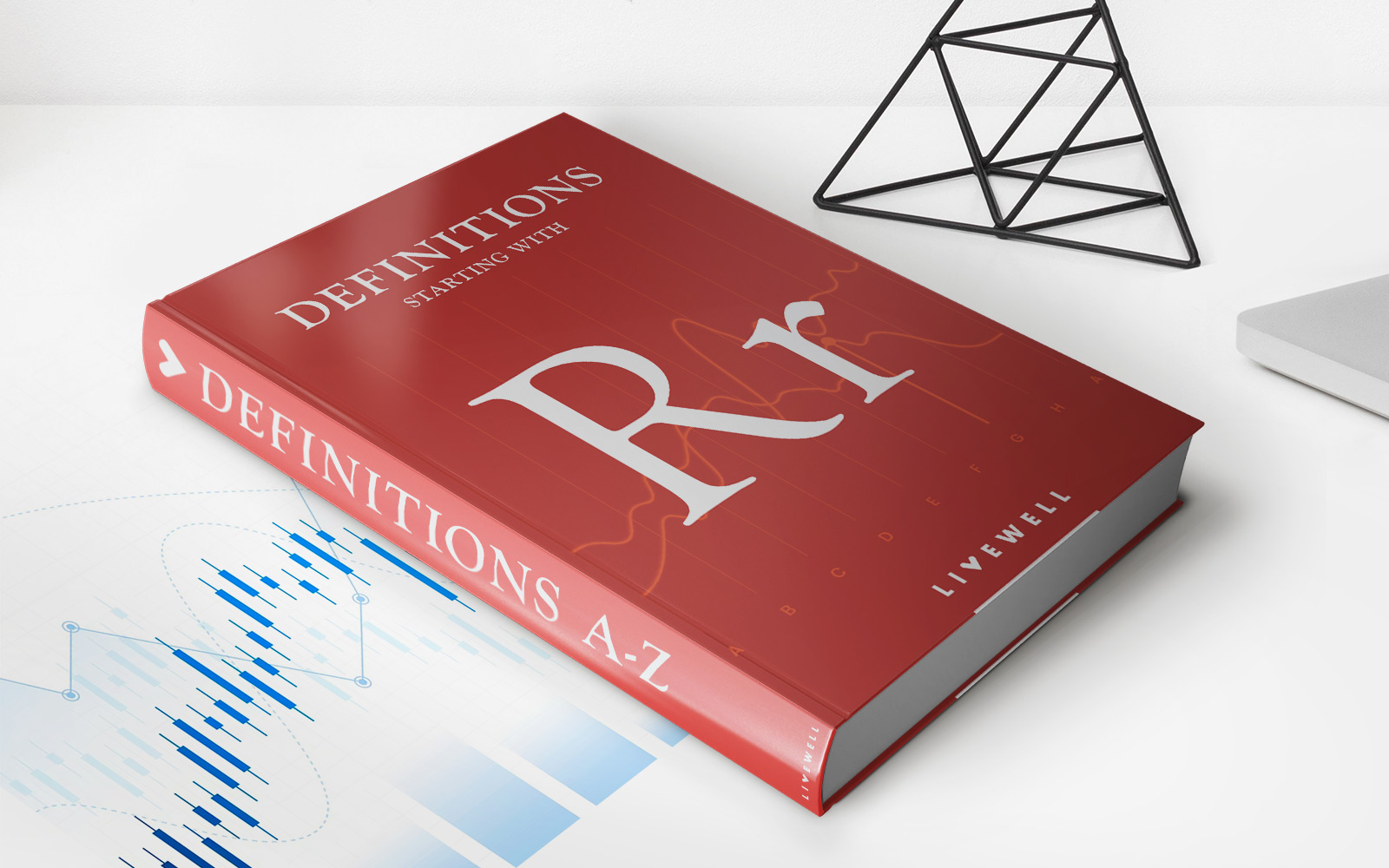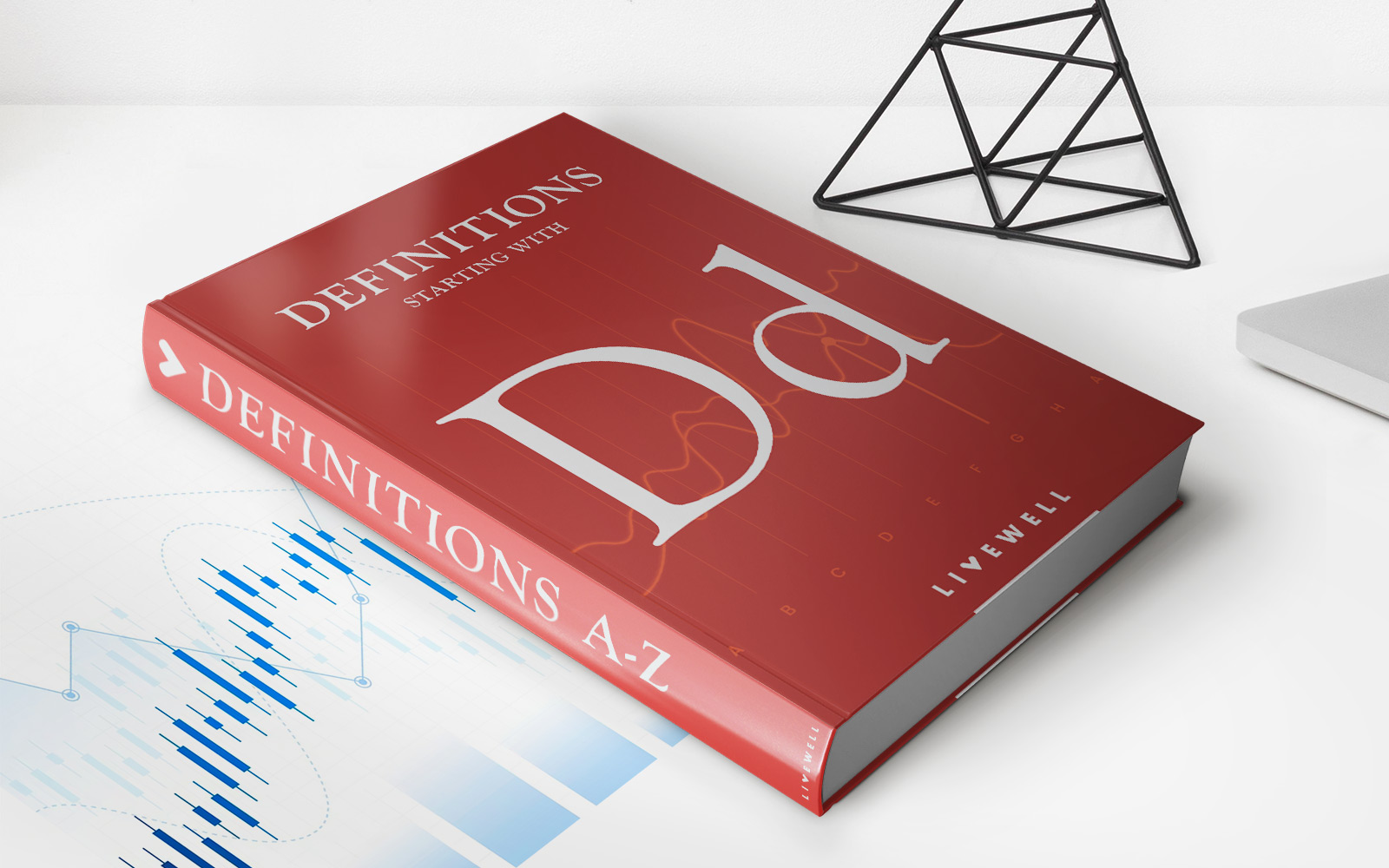

Finance
What Is An In Service Distribution From A 401K
Published: October 15, 2023
Learn more about finance and 401K plans with an in-service distribution. Discover what it is and how it can benefit your financial future.
(Many of the links in this article redirect to a specific reviewed product. Your purchase of these products through affiliate links helps to generate commission for LiveWell, at no extra cost. Learn more)
Table of Contents
- Introduction
- Overview of a 401K
- Understanding In-Service Distributions
- Benefits of In-Service Distributions
- Eligibility Criteria for In-Service Distributions
- Tax Implications of In-Service Distributions
- Withdrawal Limits and Restrictions
- Process of Requesting an In-Service Distribution
- Alternative Options to In-Service Distributions
- Conclusion
Introduction
Are you looking for ways to access funds from your 401K retirement account before reaching retirement age? If so, you may have come across the term “in-service distribution.” An in-service distribution allows you to withdraw a portion of your 401K funds while still actively employed with the company that sponsors the plan.
A 401K is a popular retirement savings plan offered by many employers to help employees save for their golden years. While traditionally, the funds in a 401K are meant to be accessed at retirement, there are certain circumstances where an individual may need or want to tap into these funds sooner. This is where in-service distributions come into play.
In this article, we will provide an in-depth explanation of in-service distributions from a 401K. We will cover the benefits, eligibility criteria, tax implications, withdrawal limits, and the process for requesting an in-service distribution. Additionally, we will explore alternative options to consider if an in-service distribution does not meet your needs.
Understanding how an in-service distribution works and its potential benefits can empower you to make informed decisions about managing your 401K and achieving your financial goals.
Overview of a 401K
A 401K is a retirement savings plan sponsored by employers for the benefit of their employees. It allows eligible employees to contribute a portion of their pre-tax income towards their retirement savings. The contributions are invested in a variety of financial instruments such as stocks, bonds, mutual funds, or other investment options chosen by the employee.
One of the key advantages of a 401K is the ability to defer taxes on both contributions and earnings until the funds are withdrawn during retirement. This tax-deferred growth can significantly enhance the potential growth of your retirement savings over time.
Employers may also offer matching contributions to incentivize employees to save for retirement. Typically, employers will match a percentage of the employee’s contributions up to a certain limit. This matching contribution is essentially free money added to the employee’s retirement account and can greatly accelerate the growth of their savings.
It’s important to note that contributions to a 401K have limits set by the Internal Revenue Service (IRS) each year. As of 2021, the maximum employee contribution limit is $19,500 for those under the age of 50. If you are over 50 years old, you may be eligible for catch-up contributions, allowing you to contribute an additional $6,500 per year.
While a 401K is primarily designed for retirement savings, it’s essential to understand the various options and features available within the plan. These features can include investment choices, loan provisions, and the ability to make early withdrawals through in-service distributions.
Next, let’s dive into the specifics of in-service distributions and how they can provide a potential solution for accessing funds from your 401K before reaching retirement age.
Understanding In-Service Distributions
An in-service distribution is a provision within a 401K plan that allows employees to withdraw a portion of their retirement savings while still actively employed. This option can be beneficial for individuals who need immediate access to funds for various reasons, such as paying off debt, funding education expenses, purchasing a home, or addressing unexpected financial emergencies.
Unlike traditional hardship withdrawals, which are typically subject to strict eligibility requirements, an in-service distribution provides more flexibility in accessing funds from your 401K. However, it’s important to note that not all 401K plans offer this option, as it is voluntary for employers to include it in their plan provisions.
The specific details of in-service distributions may vary depending on the terms set out by your employer’s 401K plan. Generally, you can typically withdraw a portion of your vested balance, which refers to the portion of your account that you own and are entitled to, including both your own contributions and any employer matching contributions that have met the vesting period.
It’s important to understand that in-service distributions are still subject to certain limitations and restrictions. These restrictions could include the maximum withdrawal amount, frequency of distributions, and potential penalties or fees for early withdrawals. Additionally, any funds withdrawn through an in-service distribution are generally treated as taxable income and may be subject to income tax withholding.
Furthermore, it’s crucial to consider the potential long-term impact of withdrawing funds from your 401K through an in-service distribution. Withdrawing funds early can reduce the overall growth potential of your retirement savings and may hinder your ability to meet your financial goals in the future. Therefore, it is typically advised to explore other options and review your financial situation carefully before opting for an in-service distribution.
In the next section, we will explore the benefits and advantages of in-service distributions, as well as the eligibility criteria that need to be met.
Benefits of In-Service Distributions
In-service distributions offer several potential benefits for individuals who need access to funds from their 401K before reaching retirement age. While it’s important to carefully consider the implications and potential drawbacks, in-service distributions can be a valuable tool in certain situations. Here are some key benefits:
- Flexibility: In-service distributions provide flexibility to individuals who require immediate access to their retirement savings. This can be particularly beneficial for addressing unexpected financial emergencies or funding significant expenses.
- Diversification: By utilizing an in-service distribution, you have the opportunity to diversify your investment portfolio. If your 401K offers limited investment options or if you prefer to invest in different assets or sectors, an in-service distribution allows you to allocate funds elsewhere.
- Debt Management: In certain cases, utilizing an in-service distribution to pay off high-interest debt can be a smart financial move. By using your retirement funds to eliminate debt, you can save on interest payments and potentially improve your overall financial well-being.
- Education Expenses: In-service distributions can be used to fund educational pursuits, either for yourself or your dependents. This can include college tuition, vocational training, or professional development courses.
- Home Purchase: Depending on the specific terms of your 401K plan, an in-service distribution may be utilized towards a down payment on a home. This can help make homeownership more accessible and provide a path towards building equity.
While these benefits can be advantageous, it’s essential to weigh them against the potential downsides of an in-service distribution. Withdrawing funds from your 401K can reduce the long-term growth potential of your retirement savings and may subject you to taxes and penalties. Therefore, it’s crucial to consider the impact on your overall retirement readiness and explore alternative options before deciding on an in-service distribution.
In the next section, we will delve into the eligibility criteria for in-service distributions and the factors that determine your eligibility to access funds from your 401K.
Eligibility Criteria for In-Service Distributions
In order to qualify for an in-service distribution from your 401K, you must meet certain eligibility criteria set forth by your employer’s retirement plan. These criteria may vary based on the plan’s provisions and the specific terms established by your employer. Here are some common factors that determine eligibility for an in-service distribution:
- Age: Some 401K plans may impose a minimum age requirement to qualify for an in-service distribution. This age requirement is typically set by the employer and may vary, but it is often around 59 ½, which is the age at which early withdrawal penalties for retirement funds no longer apply.
- Years of Service: In addition to age, many plans also require a minimum number of years of service with the employer to be eligible for an in-service distribution. This requirement ensures that employees who have shown long-term commitment to the company can access their retirement savings.
- Vesting Schedule: The vesting schedule determines the portion of your 401K funds that you are entitled to if you leave the company before reaching retirement age. Some plans may require you to be fully vested, meaning you have a right to the entire account balance, while others may have a graded vesting schedule that gradually increases your ownership over time.
- Plan Specifics: Each 401K plan may have its own specific rules and provisions regarding in-service distributions. These provisions can include limitations on the withdrawal amount, frequency of distributions, and any additional requirements or restrictions that need to be met.
It’s important to review your employer’s 401K plan documents and consult with your plan administrator or human resources representative to determine the specific eligibility criteria for in-service distributions. They can provide you with the necessary information and guidance to understand if you meet the requirements and how to proceed with requesting an in-service distribution.
In the following sections, we will explore the tax implications of in-service distributions and the potential withdrawal limits and restrictions that you should be aware of.
Tax Implications of In-Service Distributions
When considering an in-service distribution from your 401K, it’s important to understand the tax implications associated with this type of withdrawal. In-service distributions are generally treated as taxable income, which means they may be subject to federal income tax, state income tax, and potential penalties depending on your circumstances.
Here are some key points to consider regarding the tax implications of in-service distributions:
- Income Tax: Any funds withdrawn through an in-service distribution are typically considered ordinary income for tax purposes. This means they will be taxed at your marginal tax rate, which can vary based on your total taxable income and tax bracket.
- Withholding: Depending on your plan’s provisions, the distribution may be subject to mandatory income tax withholding. This means a percentage of the withdrawn amount will be withheld and remitted to the tax authorities on your behalf. The specific withholding rate will depend on your tax filing status and the amount of the distribution.
- Early Withdrawal Penalty: In addition to income tax, you may also be subject to an early withdrawal penalty if you are under the age of 59 ½. The early withdrawal penalty is typically 10% of the taxable amount and is imposed by the IRS to discourage premature withdrawals from retirement accounts.
- Rollover Options: To avoid immediate tax liability and potential penalties, you may have the option to roll over the in-service distribution into another qualified retirement account, such as an IRA. This can allow you to defer taxes on the distribution until a later date and continue the tax-deferred growth of your retirement savings.
- State Tax Considerations: While the federal tax implications apply to all individuals, it’s important to consider potential state income tax liabilities as well. Each state has its own tax laws, and the treatment of in-service distributions may vary. Be sure to consult with a tax professional or review the specific state guidelines to understand the state tax implications.
It’s crucial to consult with a tax advisor or financial professional to fully understand the tax consequences of an in-service distribution and how it may impact your overall financial situation. They can provide guidance tailored to your specific circumstances and help you make informed decisions regarding your 401K withdrawals.
In the next section, we will explore the withdrawal limits and restrictions that may be imposed on in-service distributions.
Withdrawal Limits and Restrictions
While in-service distributions can provide flexibility in accessing your 401K funds, it’s important to be aware of the withdrawal limits and restrictions that may apply. These limits and restrictions are typically set by your employer’s 401K plan and are designed to ensure the long-term viability of your retirement savings. Here are some key points to consider:
- Maximum Withdrawal Amount: Your 401K plan may impose a limit on the maximum amount you can withdraw through an in-service distribution. This limit could be a specific dollar amount or a percentage of your vested balance. It’s important to review your plan documents or consult with your plan administrator to understand the maximum withdrawal amount allowed.
- Frequency of Distributions: Some 401K plans restrict the frequency at which you can make in-service distributions. For example, you may be limited to one distribution per year or have a waiting period between distributions. These restrictions are put in place to prevent excessive and unnecessary withdrawals.
- Penalties and Fees: In addition to potential income tax and early withdrawal penalties, there may be other fees or charges associated with in-service distributions. These can include administrative fees, processing fees, or any penalties imposed by your employer’s plan. It’s important to understand and factor in these potential costs when considering an in-service distribution.
- Impact on Future Contributions: It’s worth noting that taking an in-service distribution may impact your ability to continue contributing to your 401K. Some plans require a suspension of contributions for a certain period of time following an in-service distribution. This can impact your retirement savings and potentially limit your ability to take advantage of employer matching contributions during that time.
- Plan-Specific Rules: Each 401K plan may have its own unique set of rules and restrictions regarding in-service distributions. These can include additional eligibility criteria, waiting periods, or other specific provisions that must be met. It’s important to familiarize yourself with your plan’s guidelines to ensure compliance and avoid any unexpected limitations or penalties.
Understanding the withdrawal limits and restrictions associated with in-service distributions is crucial for making informed decisions about accessing your 401K funds. It’s advisable to review your plan documents, consult with your plan administrator, or seek guidance from a financial professional to fully understand the rules and implications specific to your employer’s 401K plan.
In the next section, we will discuss the process of requesting an in-service distribution and the steps involved in accessing your 401K funds.
Process of Requesting an In-Service Distribution
If you meet the eligibility criteria and have decided to pursue an in-service distribution from your 401K, there are specific steps you need to follow to request and access your funds. The process may vary depending on your employer’s plan provisions, so it’s important to consult your plan documents or contact your plan administrator for guidance. Here is a general outline of the process:
- Review Plan Documents: Start by reviewing your employer’s 401K plan documents, particularly the sections related to in-service distributions. Familiarize yourself with the requirements, limitations, and any fees or penalties associated with the distribution.
- Confirm Eligibility: Ensure that you meet the eligibility criteria for an in-service distribution outlined in your plan documents. This includes factors such as age, years of service, and vesting status. If you are uncertain about your eligibility, contact your plan administrator for clarification.
- Complete Required Forms: Your employer’s plan may require you to fill out specific forms or paperwork to request an in-service distribution. These forms typically include information about the amount you wish to withdraw and the destination of the funds.
- Submit Documentation: Submit the completed forms and any supporting documentation required by your employer’s plan. This may include identification documents, beneficiary designations, or any additional paperwork specified by your plan administrator.
- Processing Time: Once your request is submitted, your plan administrator will review and process the distribution. The processing time can vary depending on your plan’s procedures and workload. It’s advisable to inquire about the expected timeline to receive your funds.
- Tax and Penalty Considerations: Be prepared for the potential tax implications and early withdrawal penalties associated with the in-service distribution. Consult with a tax professional to understand any tax withholding requirements and to ensure compliance with reporting obligations.
- Consider Rollover Options: If you are not in immediate need of the funds, you may consider rolling over the distribution into another qualified retirement account, such as an Individual Retirement Account (IRA). This can help defer taxes and maintain the tax-advantaged status of your retirement savings.
- Review the Impact: Lastly, take the time to evaluate the impact of the in-service distribution on your overall retirement savings and financial goals. Consider the potential reduction in your account balance, the impact on future contributions, and reassess your retirement strategy if necessary.
Remember, it’s crucial to follow your employer’s specific process and guidelines for requesting an in-service distribution. As each 401K plan may have slight variations, consulting with your plan administrator or seeking guidance from a financial professional can ensure a smooth and compliant transaction.
In the next section, we will explore alternative options to consider if an in-service distribution does not meet your specific needs.
Alternative Options to In-Service Distributions
While in-service distributions can provide a solution for accessing funds from your 401K, they may not always be the best option for everyone. Depending on your financial situation and long-term goals, there are alternative options worth considering before choosing to take an in-service distribution. Here are some alternatives to explore:
- 401K Loan: Many 401K plans offer the option to take a loan against your account balance. This allows you to borrow funds from your 401K and repay them with interest over a designated period. Taking a loan can provide access to funds while minimizing tax consequences and avoiding early withdrawal penalties. However, it’s important to note that there are specific loan terms, and failure to repay the loan can result in taxes and penalties.
- Emergency Savings: Building up an emergency savings fund is a crucial aspect of financial planning. Having a dedicated savings account to cover unexpected expenses can help you avoid tapping into your retirement funds altogether. Set aside a portion of your income specifically for emergencies, aiming to save three to six months’ worth of living expenses.
- Additional Sources of Income: Consider exploring other options for generating additional income. This can include taking on a part-time job, freelancing, or starting a side business. By increasing your income, you can lessen the need to withdraw from your retirement savings.
- Debt Repayment Strategies: If you’re facing financial challenges due to debt, focusing on a debt repayment strategy can free up your monthly cash flow. Prioritize paying off high-interest debt and consider debt consolidation or negotiation to lower interest rates or monthly payments.
- Insurance Coverage: Evaluate your insurance coverage to protect yourself from unforeseen events. Adequate health, disability, and life insurance can provide financial security and reduce the need to tap into your retirement savings during difficult times.
- Financial Planning: Work with a certified financial planner to assess your overall financial situation and develop a comprehensive plan. A professional can help you identify options, analyze the impact of potential decisions, and create a roadmap to achieve your financial goals.
Exploring these alternative options can help you make an informed decision about how to address your financial needs without jeopardizing your long-term retirement savings. It’s essential to weigh the advantages, disadvantages, and potential risks of each alternative before making a decision.
In the concluding section, we will summarize the information discussed in this article and highlight the importance of considering all factors when evaluating an in-service distribution from your 401K.
Conclusion
In-service distributions from a 401K can be a valuable option for individuals who need access to their retirement funds before reaching retirement age. Understanding the various aspects of in-service distributions, including their benefits, eligibility criteria, tax implications, withdrawal limits, and the overall process, is crucial for making informed financial decisions.
While in-service distributions can provide immediate financial relief, it’s important to carefully consider the potential drawbacks and long-term consequences. Withdrawing funds from your 401K can impact your retirement savings’ growth potential and may subject you to taxes, penalties, and other fees. Therefore, it’s essential to explore alternative options, such as utilizing emergency savings, considering a 401K loan, or focusing on debt management strategies.
Prior to pursuing an in-service distribution, it’s crucial to review your employer’s 401K plan documents, consult with your plan administrator, and seek advice from financial professionals, including tax advisors and certified financial planners. This ensures that you fully understand the specific terms, eligibility requirements, and potential tax implications associated with an in-service distribution.
Ultimately, the decision to pursue an in-service distribution should align with your financial goals, individual circumstances, and long-term retirement plans. Weigh the benefits against the potential drawbacks and carefully evaluate the impact on your overall financial strategy.
Remember, managing your 401K and making informed decisions about accessing your retirement savings is a crucial part of securing your financial future. By staying informed, seeking professional guidance, and considering all factors, you can make sound financial choices and achieve your retirement goals with confidence.














